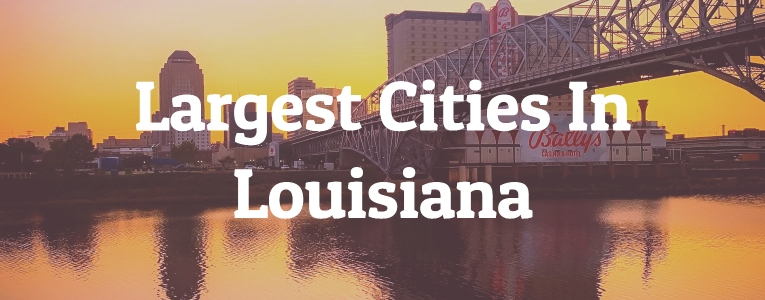Louisiana is a culturally diverse state. Texas, Arkansas, Mississippi, and the Gulf of Mexico border it in the southern US.
French and Spanish colonial history makes Louisiana distinctive. Louisiana was French in the 17th century and Spanish in the 18th. Historic structures and neighborhoods show how this shaped the state’s culture and architecture.
Louisiana is famous for jazz, blues, and zydeco. New Orleans is the cradle of jazz, and its music culture draws tourists from across the globe. Cajun and swamp pop, a mix of rhythm and blues, country, and rock & roll, are also popular in Louisiana.
Louisiana food is renowned. Gumbo, jambalaya, étouffée, and crawfish are state favorites. These recipes have a distinct flavor from fish, rice, and spices. The New Orleans Jazz & Heritage Festival and Louisiana Seafood Festival are food-focused events in Louisiana.
Louisiana parks and wildlife preserves provide outdoor enjoyment. Bayou Teche National Wildlife Refuge, Jean Lafitte National Historical Park and Preserve, and Kisatchie National Forest. Lake Pontchartrain, the Mississippi, and the Red River are in the state.
Louisiana has a distinct culture, rich history, and many natural attractions. Louisiana has something for everyone—music, cuisine, history, and outdoor leisure. Check out the 8 largest cities in Louisiana.
-
Bossier City
Population Density: 1,452 per square mile
Total Area: 43.48 square miles
Year Established: 1907
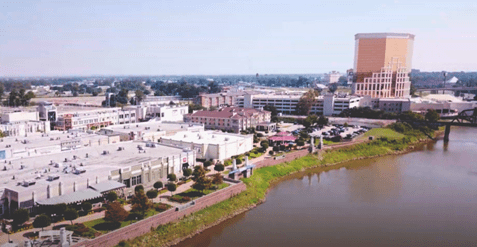 Source: Wikimedia
Source: Wikimedia
The eighth-largest city in Louisiana is Bossier City in the northwest. The Shreveport-Bossier City metropolitan region includes it across the Red River from Shreveport. History, culture, and outdoor leisure has around 63,000 people living in the city.
The Louisiana Boardwalk, a commercial and entertainment facility overlooking the Red River, is a Bossier City attraction. The Boardwalk has a movie theater, bowling alley, arcade, and many retailers and eateries. Tourists may wander along the riverside promenade for spectacular views of the Red River and surrounding surroundings.
Bossier City contains parks and natural preserves for hiking, fishing, and camping. The Red River National Wildlife Refuge outside the city provides marshes and woodlands to explore. Another popular spot is Walter B. Jacobs Memorial Nature Park, which has hiking paths and animal and ecological education programs.
Did You Know?
Bossier City has several festivals and events. The city hosts the Louisiana State Fair and the Red River Balloon Rally, which showcases international hot air balloons. The city organizes many music events, including the Cajun and Creole-themed Mudbug Madness Festival.
-
Kenner
Population Density: 4,461 per square mile
Total Area: 14.88 square miles
Year Established: 1855
 Source: Wikimedia
Source: Wikimedia
Kenner, Louisiana, in Jefferson Parish, is a thriving city near New Orleans. Kenner, Louisiana’s seventh biggest city, provides a unique combination of history, culture, and contemporary conveniences to its 67,000 residents.
The 18th-century French colonists called Kenner after local merchant William Kenner. Louisiana’s oil and gas sector and Mississippi River port were essential to the city’s history. Kenner has a varied population and a vibrant manufacturing, healthcare, and retail industry.
The city has many cultural and recreational attractions, including the Pontchartrain Center, which conducts events year-round, and the Treasure Chest Casino, which provides gambling and entertainment for all ages.
Kenner offers something for everyone. Many people call this city home because to its rich history, lively culture, and contemporary comforts. Kenner’s attractions will excite first-timers and lifetime residents alike.
Did You Know?
Kenner also values education. Top public and private schools, colleges, and universities are in the city. Kenner provides vocational and technical training for students interested in skilled crafts and other areas in addition to academic degrees.
-
Lake Charles
Population Density: 1,977 per square mile
Total Area: 44.89 square miles
Year Established: 1861
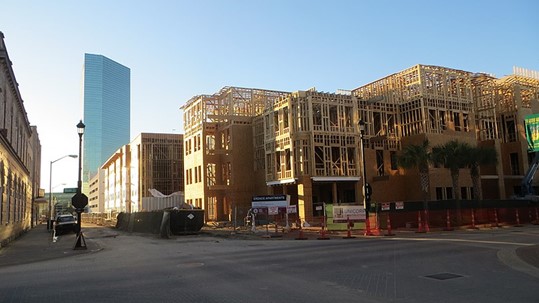 Source: Wikimedia
Source: Wikimedia
Lake Charles, Louisiana’s sixth-largest city in southern Louisiana, is recognized for its Cajun food, rich history, and distinct culture. Lake Charles is a fast-growing community with over 75,000 inhabitants and several attractions for tourists and locals.
This city has a strong culture and distinctive attractions. The Imperial Calcasieu Museum shows local history and art, while the Mardi Gras Museum displays the history and customs of the yearly festival.
Lake Charles, Louisiana, has everything. Lake Charles attracts visitors and inhabitants with its rich history, culture, outdoor activities, casinos, and culinary scene. The city’s population and economy are expanding, promising future prosperity.
Did You Know?
French immigrant Charles Sallier created the city in the early 1800s. Lake Charles, named after him, is a cultural center. Union armies took the city in 1864. Throughout the 20th century, the city became an oil and gas hub, boosting industry and population.
-
Lafayette
Population Density: 2,191 per square mile
Total Area: 55.5 square miles
Year Established: 1821
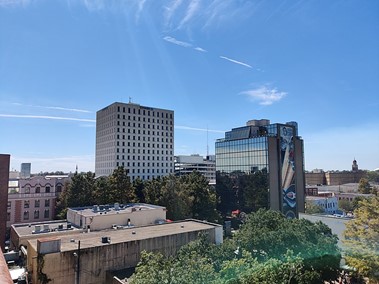 Source: Wikimedia
Source: Wikimedia
Lafayette is a lively city in Cajun Country. Louisiana’s fifth-largest city with about 126,000 residents. Lafayette has great food, music, and culture.
Jean Mouton, a French-speaking Acadian who landed there, established the city in 1821. He named the city after French commander Marquis de Lafayette, who fought with Americans in the Revolutionary War. Lafayette’s architecture, gastronomy, and festivals reflect its French heritage.
Lafayette has great Cajun and Creole food. Local eateries provide gumbo, jambalaya, and crawfish étouffée. Some family-owned businesses have been around for decades.
Lafayette’s broad economy complements its culture. The University of Louisiana at Lafayette has about 18,000 students. Lafayette General Health, the state’s biggest healthcare institution, is another important employer.
Did You Know?
In late April, Lafayette hosts the Festival International de Louisiane, a popular event. This event celebrates the city’s unique cultural history with international music, dancing, and gastronomy. One of the state’s major outdoor events, it attracts approximately 300,000 people.
-
Metairie
Population Density: 6,235 per square mile
Total Area: 23.26 square miles
Year Established: 1720s
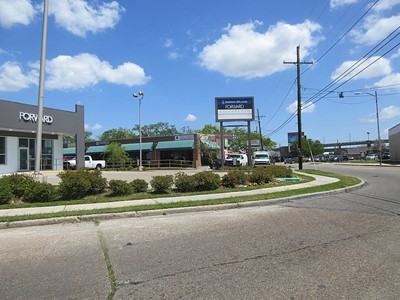 Source: Wikimedia
Source: Wikimedia
Metairie is a thriving Jefferson Parish suburb. Metairie, Louisiana’s fourth-largest city, has a diversified population, a strong economy, and a rich culture. A former farmland town, it is now a major New Orleans economic and residential hub.
Metairie is known for its vibrant business community. Retail, restaurants, professional services, and more are in the city. These companies along Veterans Memorial Boulevard, the city’s primary commercial artery.
Metairie gives outdoor lovers lots of open area despite its urbanization. The city’s biggest park, 150-acre Lafreniere Park, including walking paths, playgrounds, sports fields, and a lagoon. Bonnabel Nature Park and Bayou Metairie Park are also popular.
Did You Know?
Metairie is rich in culture and business. Several Louisiana historical people are buried at Metairie Cemetery. Lakeside Shopping Center, Clearview Mall, and Lafreniere Park are other Metairie cultural attractions.
-
Shreveport
Population Density: 1,715 per square mile
Total Area: 107.36 square miles
Year Established: 1836
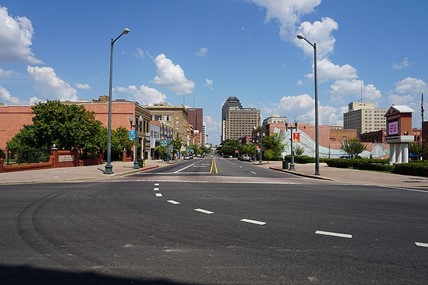 Source: Wikimedia
Source: Wikimedia
The northern Louisiana metropolis of Shreveport is dynamic and historic. It ranks third in Louisiana behind New Orleans and Baton Rouge with roughly 188,000 people. Tourists and residents love Shreveport for its rich history, diversified culture, and distinctive attractions.
The Captain Henry Miller Shreve Town Company created Shreveport in 1836. Due to its Red River location and transportation hub status, the city flourished swiftly.
Museums, galleries, theaters, and festivals showcase the city’s rich history and varied culture. The Louisiana State Exhibit Museum and Shreveport Municipal Auditorium, the birthplace of rock & roll, are popular attractions.
Oil, gas, healthcare, education, and government services fuel Shreveport’s economy. University Health Shreveport, Barksdale Air Force Base, and Willis-Knighton Health System are major employers. CSRA and CenturyLink are among the city’s tech firms.
Did You Know?
Shreveport was Louisiana’s capital briefly during the Civil War. The oil business made Shreveport prosperous in the late 19th and early 20th century.
-
Baton Rouge
Population Density: 2,624 per square mile
Total Area: 86.45 square miles
Year Established:
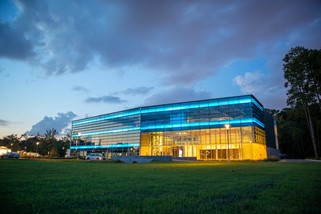 Source: Unsplash
Source: Unsplash
Louisiana’s capital and second-largest city, Baton Rouge, lies in the south. On the eastern bank of the Mississippi River, the city boasts about 220,000 residents. Baton Rouge has a robust economy, diversified culture, and great history.
Sieur d’Iberville christened Baton Rouge “Red Stick” in 1699. The Bayou Goula tribe’s red pole along the Mississippi River marked their territory’s border with the Houma tribe, giving the city its name. In 1849, Baton Rouge became Louisiana’s capital.
Baton Rouge has several historical and cultural attractions. The highest capital building in the US, the neo-gothic Louisiana State Capitol Building, allows tours. Louisiana’s capital and second-largest city is a distinctive destination with a rich history, lively culture, and varied economy.
Did You Know?
Baton Rouge’s economy includes petrochemicals, industry, healthcare, and education. Dow Chemical, ExxonMobil, and Louisiana State University are located in the city. One of the busiest Mississippi River ports, Greater Baton Rouge handles grain, coal, and petroleum.
-
New Orleans
Population Density: 2,337 per square mile
Total Area: 169.43 square miles
Year Established: 1718
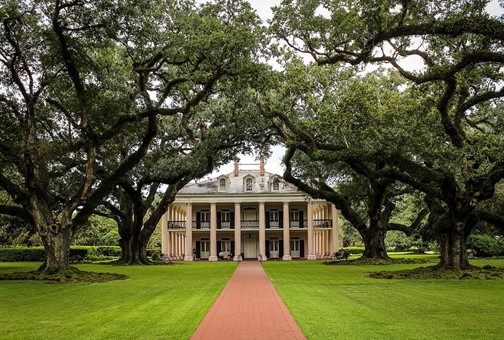 Source: Pixabay
Source: Pixabay
The southern Louisiana metropolis of New Orleans is dynamic and distinctive. The state’s biggest city, it’s a cultural and economic center with about 390,000 residents. The Mississippi River-side city boasts a rich history, distinctive architecture, and a vibrant arts and music scene.
New Orleans is known for its French and Spanish influences in architecture, gastronomy, and culture. In 1718, the French built the city, which became a Spanish colony until being ceded to the US in 1803.
New Orleans cuisine combines French, Hispanic, African, and Caribbean flavors. Gumbo, jambalaya, and po’boys are city favorites. New Orleans is famous for coffee and beignets, a morning delicacy.
Did You Know?
New Orleans is a cultural and economic hub. Tourism and shipping thrive in the city. New Orleans is one of the nation’s busiest ports and a key Latin American commerce hub.
RELATED READINGS
10 Largest Cities In North America By Population
10 Largest Cities In Ohio By Population
10 Largest Cities In Indiana By Population
